Review
Omoda set out to provide a premium product for a mainstream price with the 9 and it has largely succeeded. There’s plenty of positive elements to the car, including price, range and perceived quality. The digital user interface is a disappointment, however, and it’s not the most agile thing to drive.
Overview
Omoda is still very much a new brand in the UK market but it’s making quite the impact, with more than 5,000 cars registered this year already it’s outperforming a number of established marques. And that’s with just one model on sale.
Things are about to switch up a gear for the Chinese brand, however, with the introduction of the new Omoda 9. It’s the brand’s flagship model and competes in the mid-size premium SUV segment. That means taking on the BMW X3, Mercedes GLC and the Volvo XC60 – to name but a few.

With a plug-in hybrid (PHEV) powertrain that develops and impressive 449PS and promises a zero-emission range of more than 90 miles, the 9 is shaping up to be a serious contender in the fleet market.
Pricing for the Omoda 9 is significantly less than the premium-sector average. In fact, it is priced to contend with mainstream PHEVs like the Hyundai Tucson and VW Tiguan. It starts at £44,990 and tops out at, well, £44,990. There’s no trim levels or other powertrain choices, just one model that comes loaded with equipment. So, company car drivers may find the car a lot more accessible than other, similar, models.
Comfort and practicality
With premium-segment ambitions, Omoda hasn’t held back in giving the 9 a plush feel. The interior looks and feels upmarket with synthetic leather upholstery, and contrasting silver trim pieces.
There’s a large centre console that houses a pair of wireless phone charging pads and a large storage bin with two cupholders. Further space can be found beneath the console. The door panels and lower dashboard are wrapped in the same material as the seats, while exposed plastic surfaces are of a decent quality.

Switchgear has been kept to a minimum, but the interior features plenty of design features to provide a more luxurious and less minimalist feel.
The front seats are wide and supportive, with electric adjustment. We found it relatively easy to get comfortable - although the limited reach adjustment on the steering column means you have to set the seat a little further forward.
Taller drivers might find they are perched higher than they’d like – even when you’ve established that the seat switch needs a double tap to reach the lowest setting - and this isn’t helped by the rake of the windscreen, which puts your head close to the sun visor area.
The seats have heating and cooling functions, which is a nice touch at this price point. Oh, and Omoda hasn’t forgotten about those in the back. The rear seats are just as fancy, with electric reclining and the same heating and cooling options as the front seats.
Legroom in the rear is fair, although the front seats are pretty bulky. You get more space in a Renault Rafale.
Boot space is on par with some of the largest estate cars, offering 660 litres of space or 1,783 litres if you fold the rear seats down.
Safety and technology
At first glance the Omoda 9’s interior looks promising from a technology perspective. There’s a row of rotary dials, some seat adjustment switches, normal looking column stalks. Sounds great, right?
Well, this is 2025 and Omoda is a Chinese company, so dig a little deeper and you’ll find the same generic user interface and infotainment system that used in pretty much everything from the region, including BYDs and Xpengs. Omoda has fiddled with the skin, but it’s essentially a glorified Android tablet.
Compared to the slick, customised user interface you’ll get in a BMW, Mercedes or even a Ford, the Omoda’s system leaves a lot to be desired. Especially for a 'premium' model.

The central touchscreen is mounted alongside a digital instrument cluster display, giving a panoramic effect.
Most users will likely plug in their smartphone and use Android Auto or Apple CarPlay, which works great until you want to adjust one of the car’s settings. There's no 'home' button, by default, to get back into the car's main menu. We also thought the touch sensitive volume control was a bit naff in comparison to the tactile rotary controls.
These physical controls cover the basic climate functions and drive modes, which is great. But, heated seats? In the menu. Cooled seats? In the menu. Some of the driver aids are accessible by swiping down from the top of the screen, where you can quickly switch off lane departure warning and speed limit assist. If you want to switch from EV to Hybrid mode, however, it’s buried in another menu somewhere. One more row of physical switches would make SUCH a difference to the user experience.
The driver assistance technology isn’t the most advanced we’ve experienced, with far too many ‘driver distracted’ warnings and a fairly keen lane departure warning system. Adaptive cruise control comes as standard, along with a very smart surround view camera system.
Driveability and efficiency
The Omoda 9’s sole powertrain is the Super Hybrid System (SHS) which combines a 1.5-litre turbocharged petrol engine with two electric motors and a giant 35kWh battery.
At full chat the car develops 449PS and 700Nm, giving 0-62mph acceleration in less than five seconds. Certainly enough to worry those premium competitors.
For fleets, it’s the 93-mile zero-emission range that’s going to be the most prevalent statistic, however.
The hybrid system can operate in a variety of different modes, some of which can be controlled by the driver and some that are done by the car. If you leave it in ‘smart’ mode, the powertrain will switch between petrol and electric power to suit the current driving conditions. Electric-only driving is possible in pretty much any situation, thanks to the twin-motor setup.
Even when the battery is low, the motors still do a lot of the work with the petrol engine just running in the background to provide electricity. The engine can also send power to the wheels directly, usually when cruising at set speeds where it’s most efficient. The upshot is that, unlike most PHEVs, the Omoda 9 always has a degree of battery charge available. As such, the brand claims a combined range of 700 miles is possible with a full tank of fuel.
We were getting around 47mpg, according to the trip computer, and that included a fair amount of driving with the engine running.
Performance is decent, although don’t expect a sporty driving experience. The punchy power output helps with overtakes but even with the adaptive dampers, steering and brakes set to their most aggressive modes (there are three), the 9 remains benign on country roads. We preferred to switch into comfort mode and enjoy the car in a more relaxed state where it actually rides really well.
When it comes time to charge, DC fast charging at 70kW is supported. An overnight charge on a typical 7kW unit will take five hours.
Company car tax and running costs
It’s hard to overlook the Omoda 9 from a value perspective alone. It sits in the 6% benefit-in-kind (BiK) tax bracket, which gives it an immediate advantage over rivals; and that’s before you consider price.
The Renault Rafale PHEV is probably the closest rival, costing £45,540. It has a shorter range, so BiK tax is 9%, and is less powerful. Step up to a Mercedes GLC300e, which is in the same 6% BiK band, and it’ll cost almost £70,000.
You might also consider the BYD Seal U DM-i, which uses a very similar hybrid system to the Omoda. It's not as plush but it has a similar electric range and costs a fair bit less.
Running costs data for the Omoda 9 isn’t available yet, so we can’t make a definitive judgement on its suitability for fleets.
Matt has been an automotive journalist for nine years and has driven just about every new car and van that's on sale. As content editor - vehicles he is responsible for the automotive content on Fleet News and also contributes to Automotive Management. Prior to this, Matt worked in the automotive industry for 10 years.




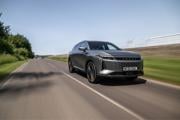


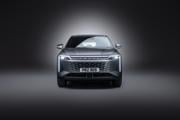

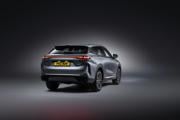
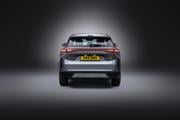
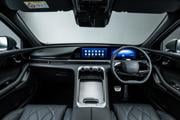



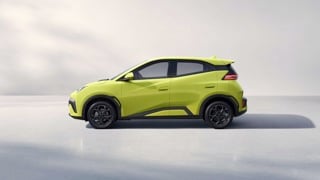

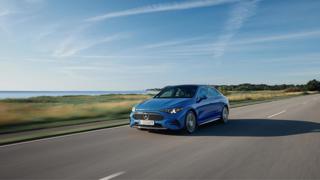
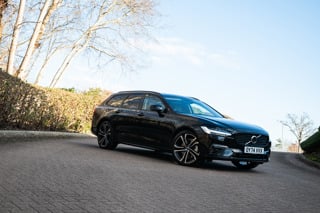




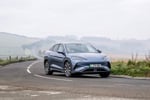








Login to comment
Comments
No comments have been made yet.